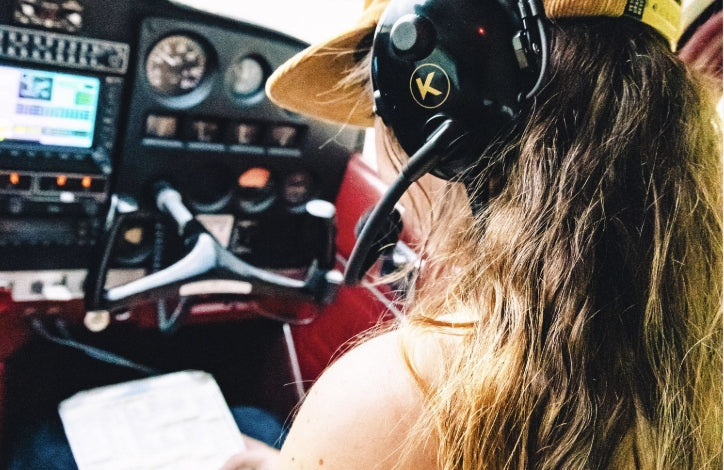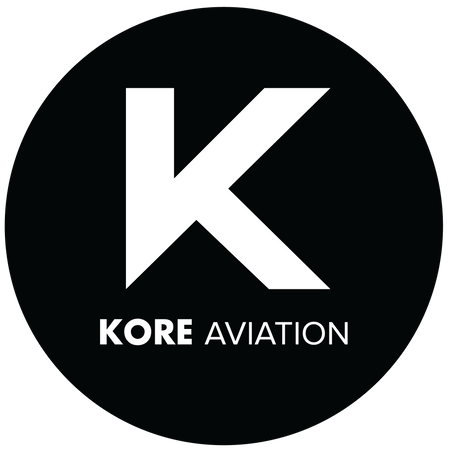
Kore Aviation - Your instructor just gave you the green light for your first solo. Congratulations! This is a huge milestone for every pilot in training. But now you're probably wondering, how to prepare for the first solo flight?
Feeling nervous is normal. Even experienced pilots remember their solo day clearly. The good news is, you're not alone. This guide will walk you through everything you need to get ready, mentally, physically, and technically.
Let’s break down what to expect and how to show up fully prepared.
What Is a First Solo Flight?
A solo flight is when a student pilot flies the airplane alone for the first time. It usually takes place in the traffic pattern at your home airport under visual flight rules (VFR). You'll perform takeoffs, landings, and normal pattern work without your instructor in the right seat.
Before the Big Day: FAA Requirements You Must Meet
To prepare for your first solo, make sure you’ve already completed these FAA milestones:
- Student Pilot Certificate issued
- At least 16 years old (14 for gliders)
- Hold a valid third-class medical certificate
- Instructor endorsement for solo flight in logbook
- Completed required training on takeoffs, landings, emergencies, and airspace rules
Discover More: What Are the Student Pilot Solo Flight Requirements?
Mental Preparation Tips for Solo Flight
Even with skills, many students struggle mentally before flying solo. Here's how to prepare yourself emotionally and mentally:
-
Trust Your Training
You've practiced these patterns dozens of times. Your instructor would not sign you off unless they were 100% confident in you. -
Visualize Success
The night before, walk through the full flight in your mind. Picture the takeoff, climb, pattern, approach, and smooth landing. -
Breathe and Focus
Before engine start, take a deep breath. Say a short checklist out loud. Center yourself and block out distractions.
Physical Prep: Sleep, Fuel, and Hydration
-
Get Enough Rest
You want to be alert. Sleep at least 7 to 8 hours the night before. -
Eat Light
Have a balanced meal. Avoid heavy or greasy foods that could upset your stomach. -
Stay Hydrated
Drink water, not too much coffee. Bring a water bottle for post-flight.
Technical Checklist: How to Prepare for the First Solo Flight
-
Preflight Thoroughly
This is not the time to rush. Go over the checklist slowly and double check every control surface, fluid level, and safety item. -
Use a Knee Board or Notepad
Write out your pattern altitudes, radio frequencies, and emergency procedures just in case you forget. -
Wear Comfortable Gear
Clothing should not restrict your movement. Also, make sure your headset fits well.
Need help choosing one? Discover More: Which Aviation Headset Is Right for Beginner Student Pilots?
What to Expect During Your First Solo
-
Instructor Walkthrough
They’ll review weather, airspace, and emergency options one last time. Then they’ll step out and give you a thumbs-up. -
You Taxi Solo
Take your time taxiing to the runway. Breathe and review your takeoff briefing. -
Takeoff and Pattern Work
Stick to what you’ve practiced. You’ll usually fly three full-stop landings or touch-and-gos depending on your instructor’s preference. -
Post-Flight Debrief
Once you land and taxi back, your instructor will debrief with you and likely cut off your shirt tail, a fun tradition for first solo pilots.
5 Common Solo Flight Mistakes and How to Avoid Them
-
Forgetting Radio Calls
Write them down ahead of time. Say each clearly and slowly. -
Rushing the Pattern
Fly a wide, slow pattern. Give yourself room and time. -
Skipping Preflight Items
Use your checklist every time. No exceptions. -
Getting Flustered by Minor Mistakes
Everyone makes small errors. Stay calm and correct. -
Overcorrecting During Landing
Small, steady inputs win. Avoid jerky movements near the ground.
FAQs: How to Prepare for the First Solo Flight? Guide
-
How many hours do I need before soloing?
Most students solo between 10 and 25 hours depending on skill, weather, and frequency of lessons. -
When is student truly ready?
When your instructor sees consistency, good judgment, and go-around discipline, not only skill but confidence. -
What should I bring for my solo flight?
Checklist, logbook with instructor endorsement, your headset, water, and a notepad. -
What if I get nervous in the air?
Take a deep breath, stay calm, and fly the plane. Your training will kick in. -
Can I solo at a towered airport?
Yes. As long as you’ve received proper training and endorsements, you can solo at both towered and non-towered fields. -
Do I need to land three times?
Most first solos involve three takeoffs and landings, but your instructor sets the plan based on weather and your performance. -
Do I need to talk to ATC?
If you're at a towered airport, yes. Practice your radio calls ahead of time.
Final Thoughts
Your first solo flight is a memory you’ll carry forever. When you're wondering how to prepare for the first solo flight, it all comes down to good habits, strong gear, and mental clarity. Trust yourself. Trust your instructor. You’ve got this!
Want crystal-clear audio for your first solo? Check out the Kore Aviation KA-1 headset. Affordable, reliable, and built for student pilots. Fly with confidence from day one.
